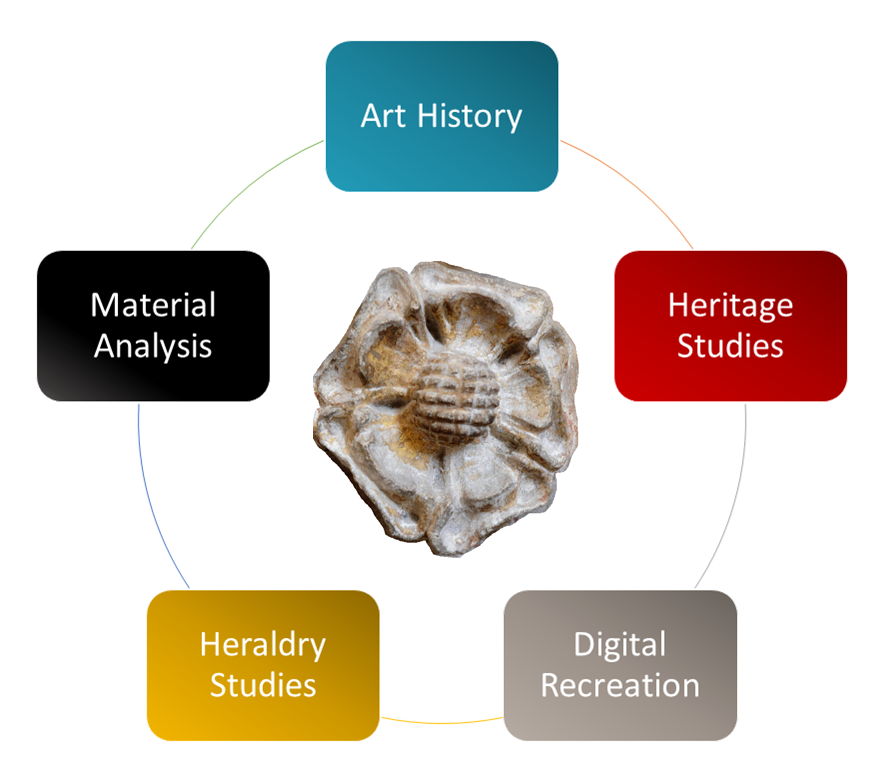The Project
|
“Monumental Polychromy: Revealing Medieval Colours at Batalha” is a research and educational project that aims to study the original polychromy of the 15th century Founder’s Chapel at the Monastery of Batalha, and to make its findings known both to the academic community and to the general public.
The chapel still shows small pigmented areas that suggest it was originally extensively coloured, and therefore offered a very different appearance to its current bare-stone look, which resulted from thorough cleaning and stripping campaigns in the 19th and 20th century. The study of medieval polychromy on architectural and sculptural objects is a growing field of study internationally that has so far remained completely unexplored in Portugal. A key aim of this project is therefore to open up a new field of research in Portuguese Art History in close and necessary collaboration with other scientific disciplines: material analysis, heraldry and digital reconstruction. As such, it constitutes a first case study, an innovative pilot project with a view to further collaboration between the institutions involved and others in the future. |
To this end, the project will work to identify to what extent, in what ways and for what purposes colour was applied to the achitectural structures and funerary monuments of the chapel. The material evidence of the use of colour will also be considered in the light of current scholarship on the heraldic and decorative significance of such use. Once we have identified the colours originally chosen as part of the programme designed by king João I, king Duarte and other possible agents, and established their possible meanings, the project aims at making this knowledge available both to the Chapel’s visitors (by means of an on-site interactive 3D display) and online for the academic community and general public at large through. The project also contemplates making its findings known through a book targeted to the general public, academic articles and participation on scientific conferences.
Based on the above, the project’s goals can be summarised as follows:
Based on the above, the project’s goals can be summarised as follows:
- Opening up a new research area in Portuguese Art History, thus contributing to disciplinary innovation, paradigm revision and methodological advance;
- Promoting interdisciplinarity, namely between art-historical research (by art historians, historians and heraldists), material analysis (by chemists) and technological research (by engineers) applied to the development of an application that will recreate the original coloured appearance of the Chapel’s architectural structures and the funerary monuments it contains;
- Furthering the knowledge on the Founder’s Chapel, in itself but also as part of the larger monastic complex, in order to understand its material, aesthetic, funerary, political, social and religious significance;
- Contributing through a first case study to a more accurate understanding of medieval architectural sites as they were originally conceived, with colour as a key aesthetic and symbolic element. This will counter commonly-held perceptions of medieval monuments as bare-stone structures, which were actually the result of restoration interventions from the 19th century onwards;
- Disseminating the project’s resulting scholarship among both the academic community and the general public;
- Promoting the cooperation between institutions developing activities associated to Art History (heritage, restoration, heraldry study, material study, audio-visual divulgation of scientific contents).


